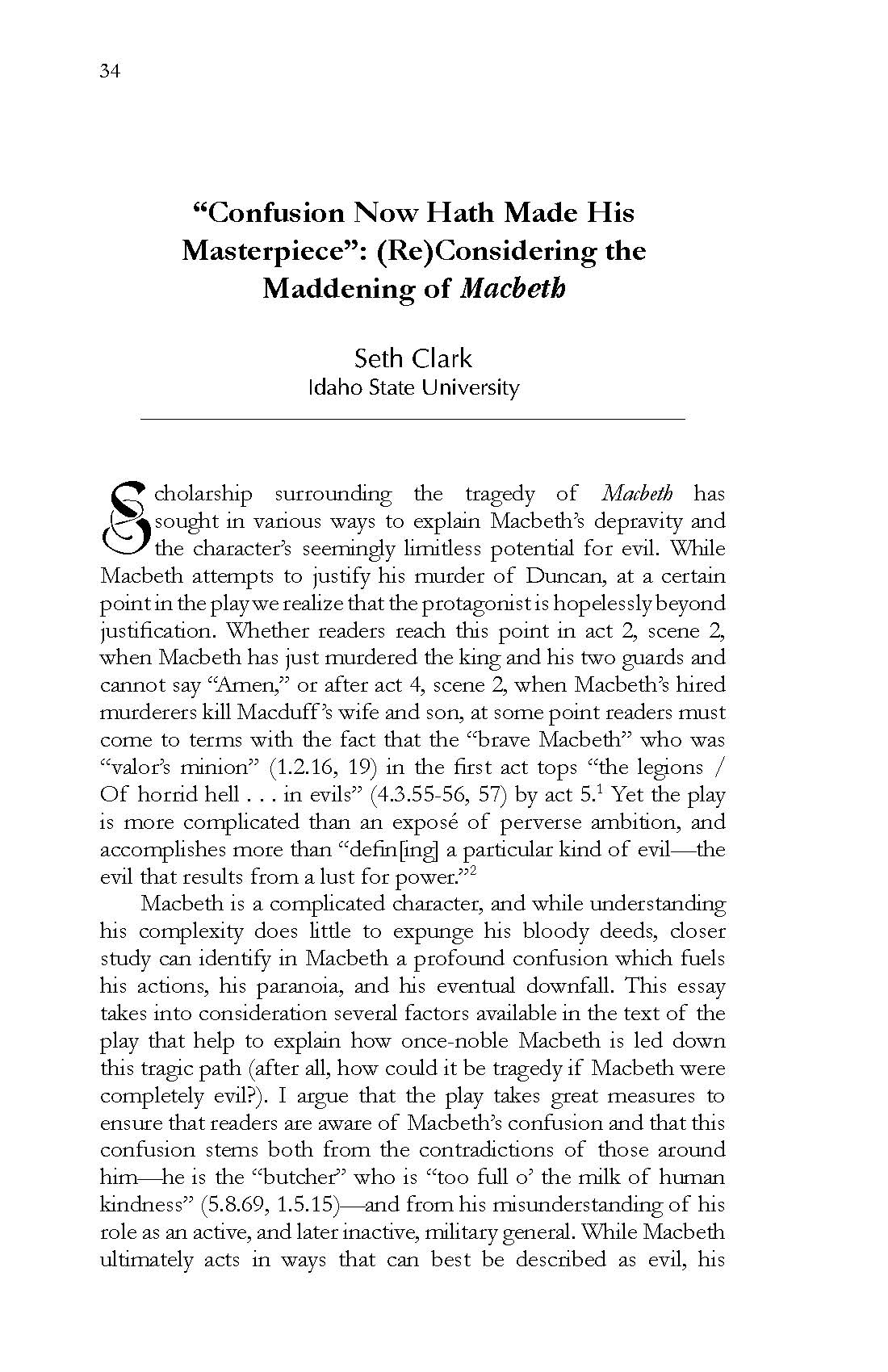“Confusion Now Hath Made His Masterpiece”: (Re)Considering the Maddening of Macbeth
Main Article Content
Abstract
Scholarship surrounding the tragedy of Macbeth has sought in various ways to explain Macbeth’s depravity and the character’s seemingly limitless potential for evil. While Macbeth attempts to justify his murder of Duncan, at a certain point in the play we realize that the protagonist is hopelessly beyond justification. Whether readers reach this point in act 2, scene 2, when Macbeth has just murdered the king and his two guards and cannot say “Amen,” or after act 4, scene 2, when Macbeth’s hired murderers kill Macduff ’s wife and son, at some point readers must come to terms with the fact that the “brave Macbeth” who was “valor’s minion” (1.2.16, 19) in the first act tops “the legions / Of horrid hell . . . in evils” (4.3.55-56, 57) by act 5.1 Yet the play is more complicated than an exposé of perverse ambition, and accomplishes more than “defin[ing] a particular kind of evil—the evil that results from a lust for power.”2
